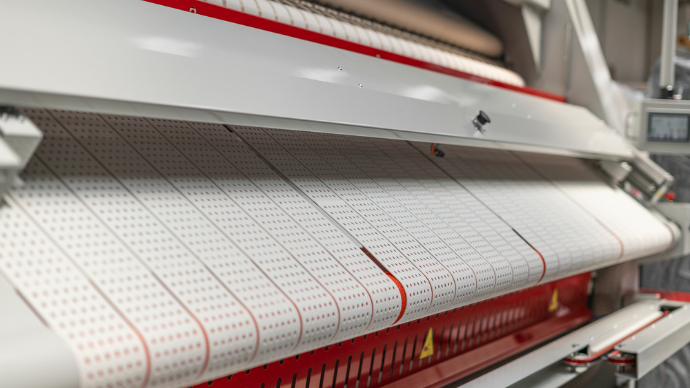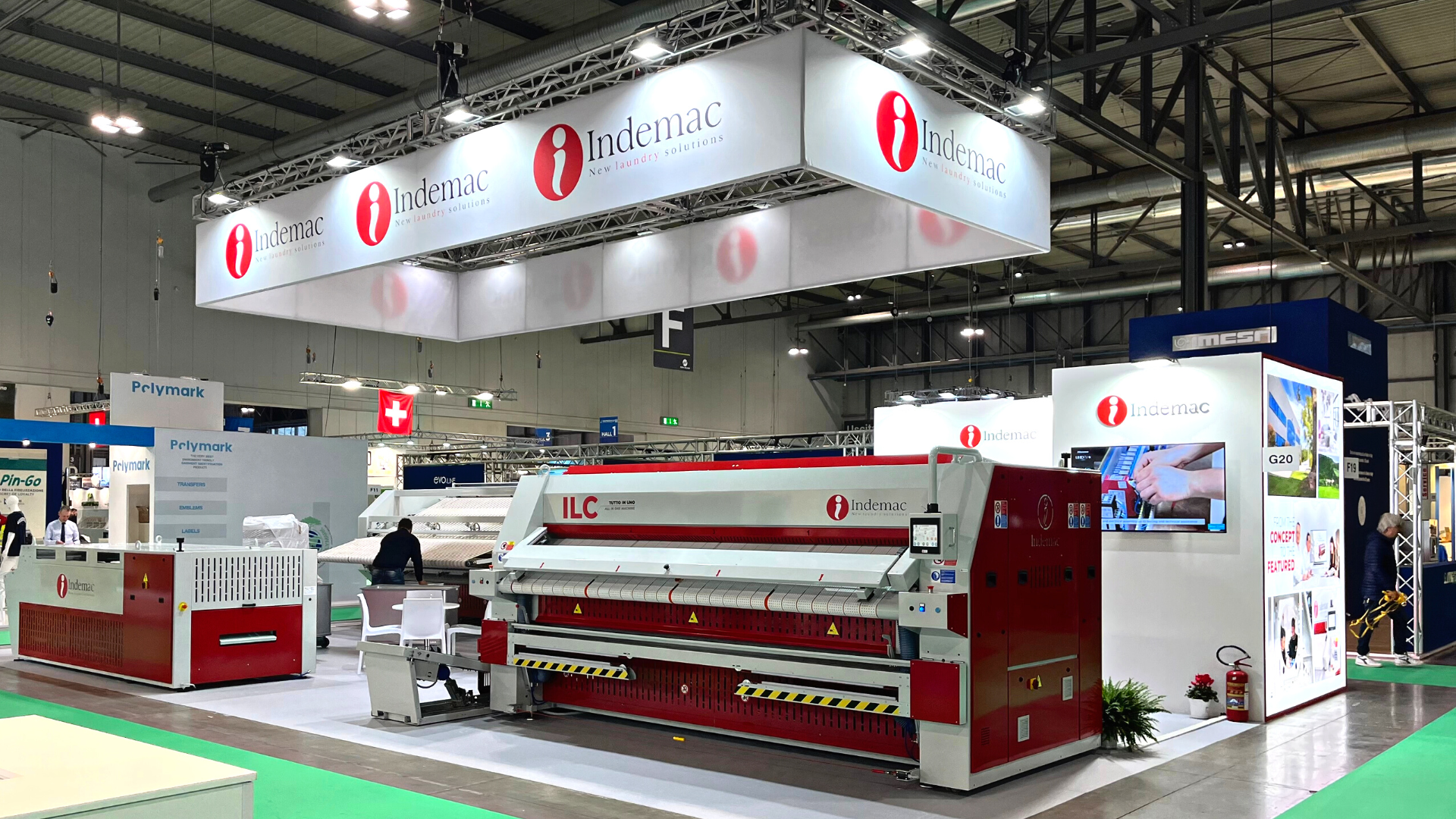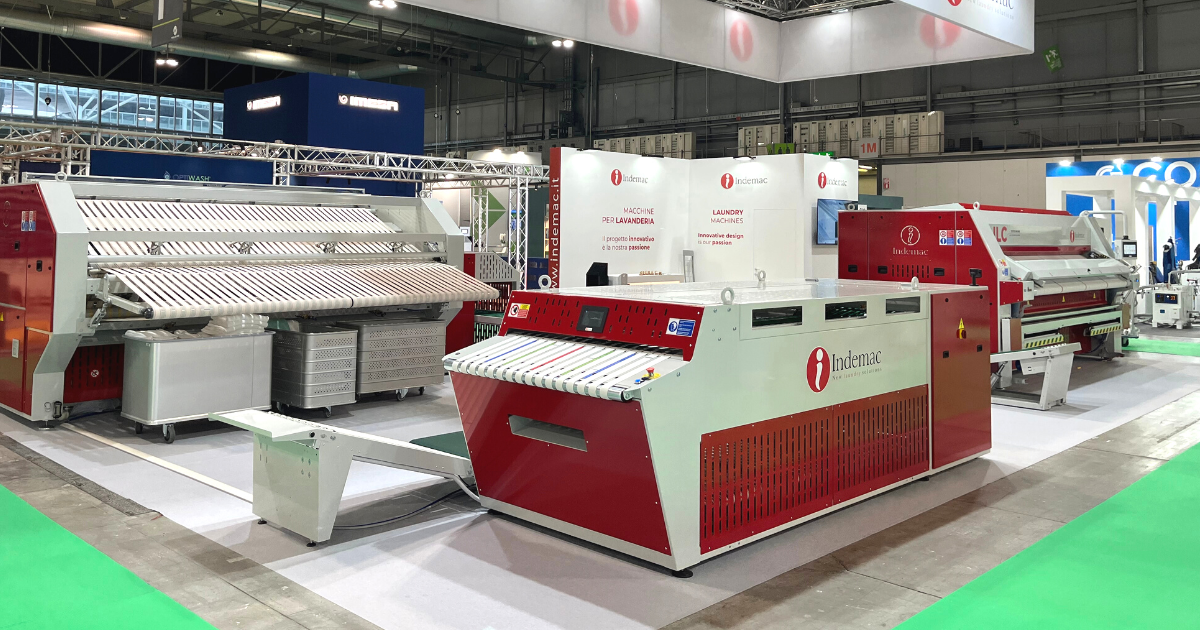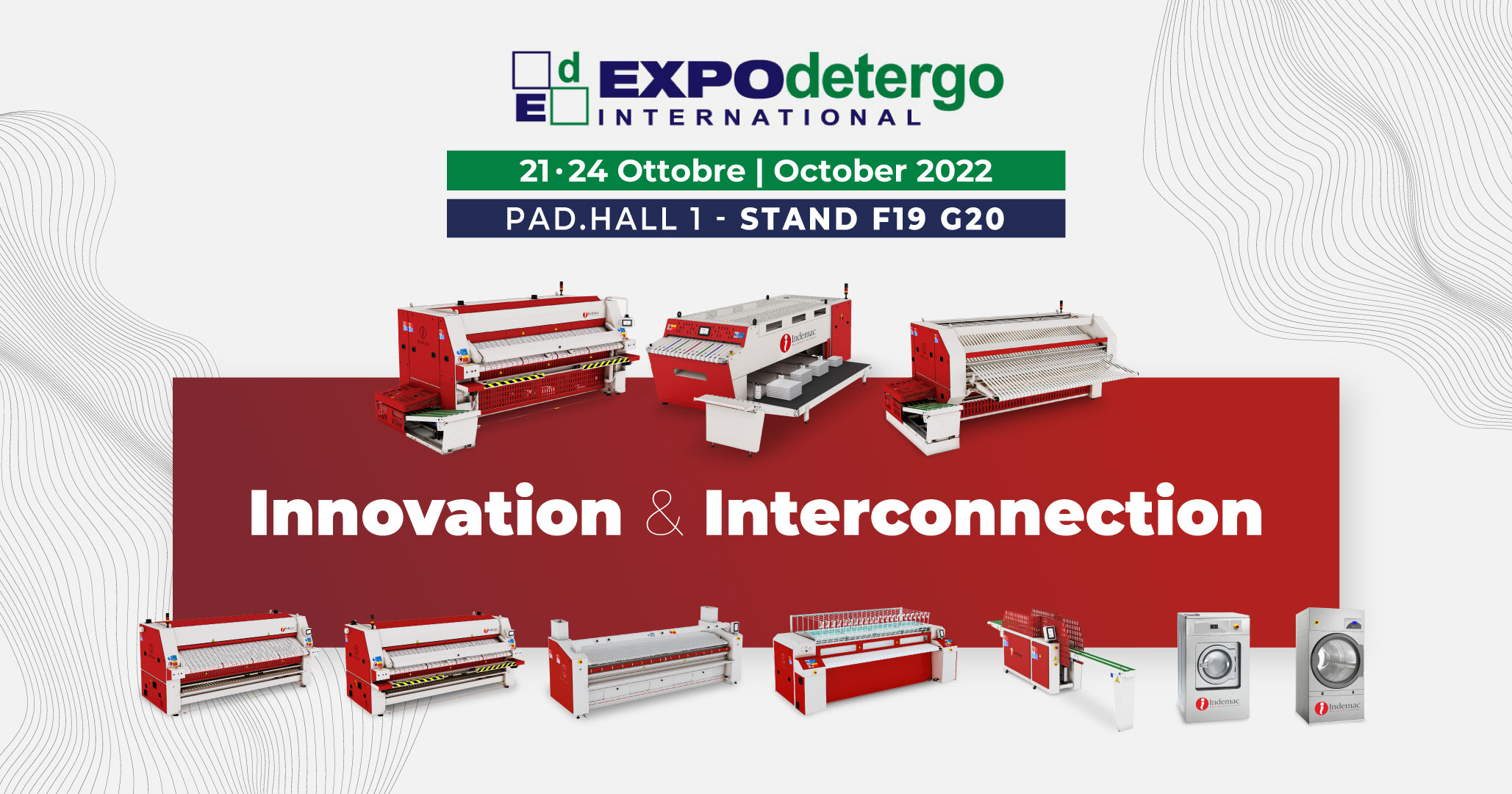Linen management in hospitality: how to ensure quality and efficiency with Indemac
In the hospitality industry, every detail contributes to creating a unique experience for guests. Among these, the quality of linen plays a crucial role in shaping customers’ perception and satisfaction.
How can you ensure high standards and maximum efficiency in managing your hotel’s linen? Keep reading the article!
The importance of quality linen in the hospitality industry
The quality of linen is not just about aesthetics: soft sheets, flawless towels, and perfectly pressed tablecloths are synonymous with luxury and customer care. Offering your guests high-quality linen is essential for projecting a professional and well-maintained image of your property, which in turn increases customer loyalty and improves online reviews.
Investing in an in-house laundry with reliable, high-performance machines is a strategic choice for hotels, B&Bs, and restaurants that want to provide impeccable service without relying on external suppliers.
This is why an in-house laundry is a smart investment: it ensures complete control over linen quality and availability, especially during seasonal peaks.
Innovative solutions for your in-house laundry
Managing linen quickly and efficiently is a challenge, especially during seasonal peaks. Indemac’s industrial laundry machines help optimize every stage of the process: from ironing to folding, achieving perfect results in reduced time. Our range includes innovative solutions such as the ILC series, an all-in-one ironer-folder, ideal for handling large volumes of work without compromising on quality.
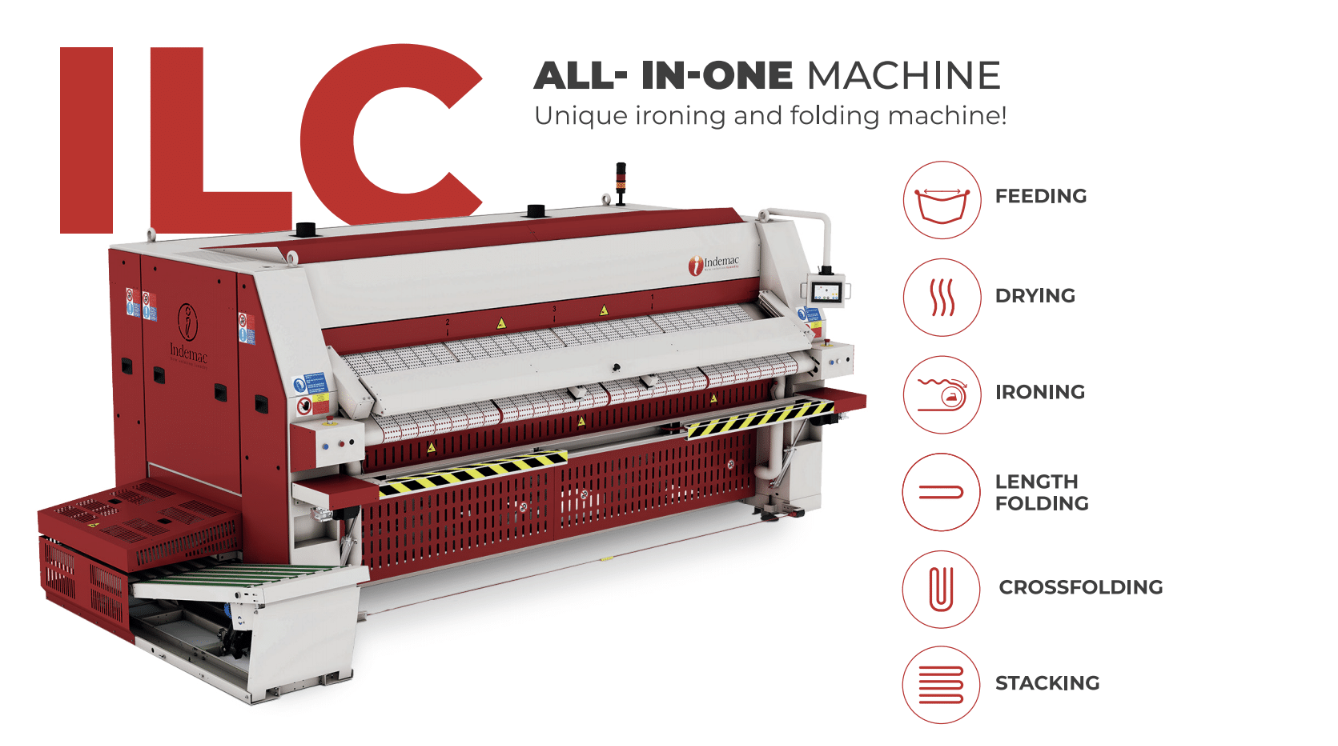
Each machine is equipped with advanced technologies, such as a pressing system that preserves fabrics, and intuitive touch-screen panels that make operation simple and immediate.
Every detail is designed to streamline operators’ tasks while improving overall operational efficiency.
The benefits of an in-house laundry for hospitality businesses
Having an in-house laundry offers numerous advantages for hospitality businesses.
Reduced management time
Having an in-house laundry eliminates waiting times associated with external suppliers. There’s no need to schedule pickups and deliveries, ensuring immediate availability of linen. This is especially important during seasonal peaks when work volume increases significantly.
Optimized operational costs
An in-house laundry helps reduce long-term costs. Indemac machines are designed to be highly energy-efficient, thanks to innovative technologies that minimize energy and water consumption. Additionally, process automation reduces the need for a large operational workforce, providing further savings.
Quality control
Managing linen internally allows you to maintain high and consistent standards. Indemac machines ensure precise ironing and folding, preserving fabric quality and prolonging its lifespan. The ability to inspect each item in-house prevents any unpleasant surprises that could affect the guest experience.
Operational flexibility
With an in-house laundry, you can handle emergencies and respond quickly to last-minute requests, such as unplanned linen changes or unexpected events. Thanks to automation and ease of use, Indemac machines enable you to manage these challenges without stress.
Higher guest satisfaction
Impeccable linen not only contributes to a luxurious experience but directly impacts online reviews and customer return rates. With Indemac, you can provide continuous, high-quality service even during busy periods.
Environmental sustainability
Indemac machines are designed to minimize waste and respect the environment. Their energy efficiency and conscious use of resources make our solutions ideal for establishments seeking to combine quality with sustainability, while also enhancing their green reputation.
Ongoing technical support
Indemac offers a full technical support and scheduled maintenance service. This ensures your machines remain operational, preventing downtime and unforeseen costs.
Some supporting data
Integrating an in-house laundry into your hospitality business brings measurable benefits that can transform operational efficiency and improve profits. Here are some insights and data that highlight the advantages:
- Cost Reduction by up to 30%: eliminating external supplier costs focuses operational expenses solely on energy, water, and staff, which can be optimized with Indemac’s efficient machines.
- Productivity Increase by 25%: with an in-house laundry, even a single operator can handle large volumes of work in reduced time thanks to process automation.
- Delivery Times Reduced by 50%: having an in-house laundry eliminates delays associated with pickup and delivery from external suppliers.
In summary, an in-house laundry is not just an operational advantage, but a strategic decision that can have a direct positive impact on profits and guest satisfaction. Investing in solutions like our industrial laundry machines means taking a step toward a more efficient and sustainable management model.
Want to learn how Indemac can help you achieve these goals?

